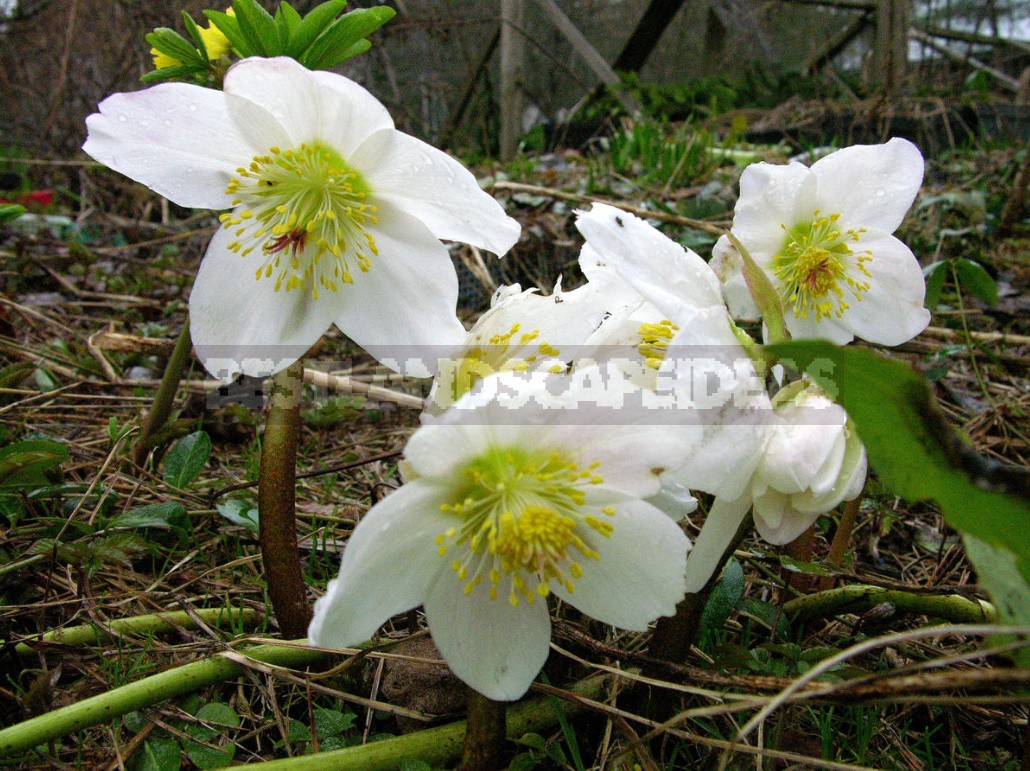
Helleborus orientalis and its varieties
And here is another famous Helleborus orientalis. It grows in mountain forests. The species is very variable. Sometimes it is divided into three separate ones: Helleborus abchasicus with bright pink flowers, Helleborus guttatus with greenish-white speckled flowers, and Helleborus orientalis ssp. proper orientalis = Helleborus caucasicus, which has white flowers with a greenish tinge and grows throughout its range.
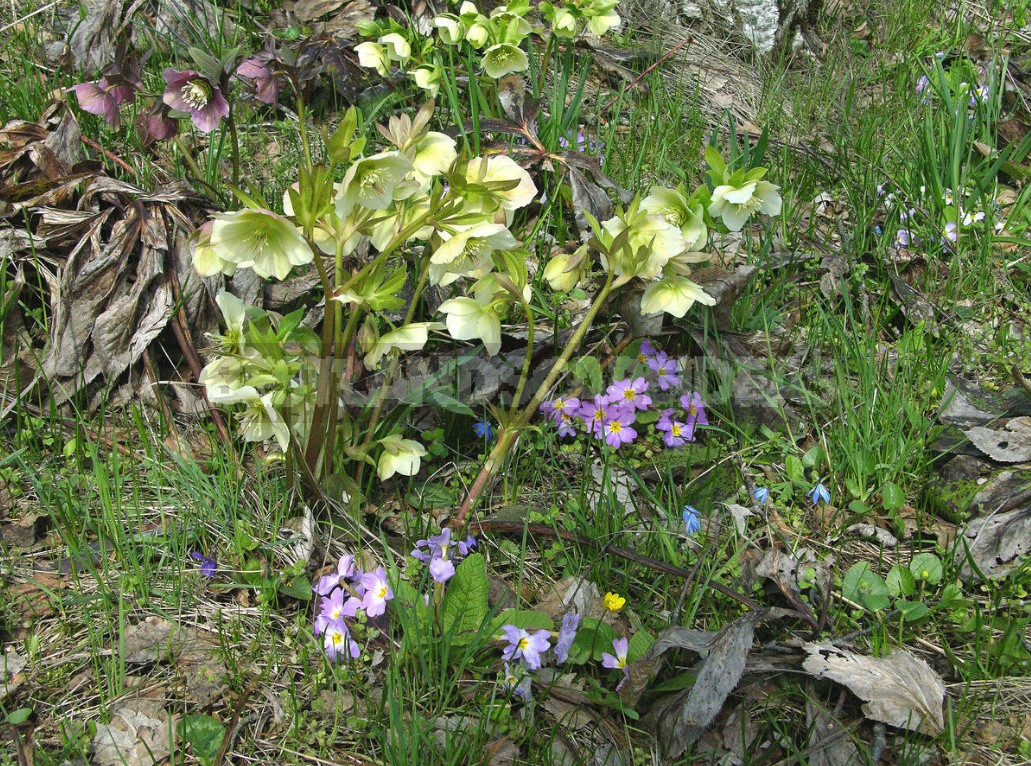
The independence of these species is doubtful, since they easily interbreed at meeting places and give intermediate forms.
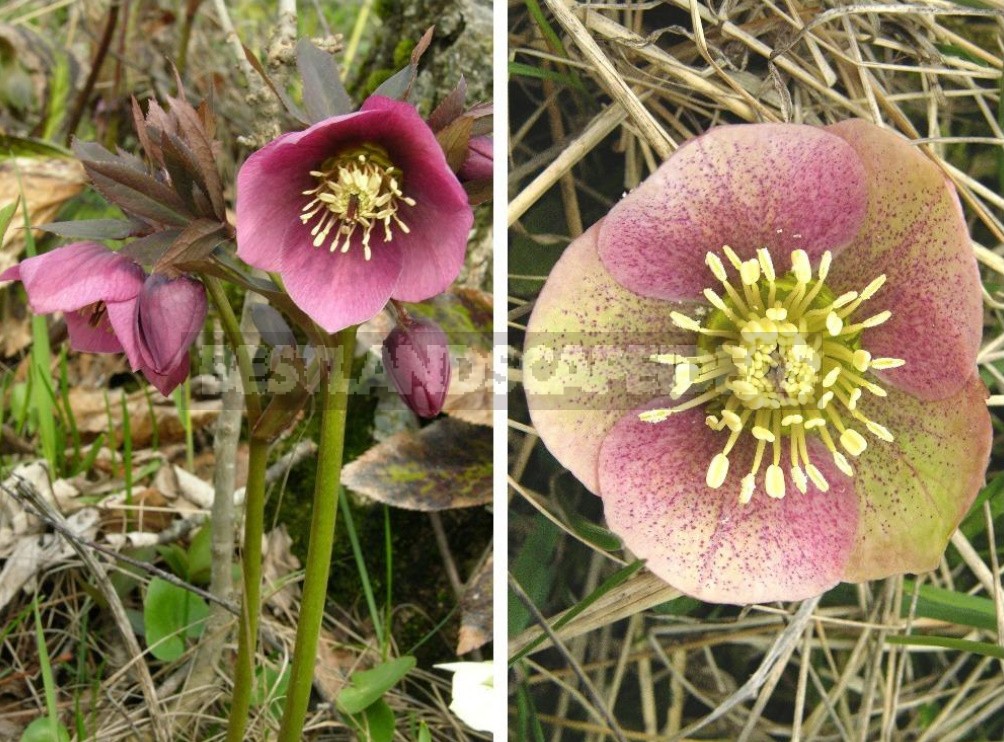
An amazing variety of forms had to be observed in one Botanical garden, where they, according to the staff, were leached from the offspring of local Helleborus orientalis. But looking at all these maroon, yellow, green, plum, and speckled flowers of various shapes and sizes, it is hard to believe that other relatives are not involved in their lineage.
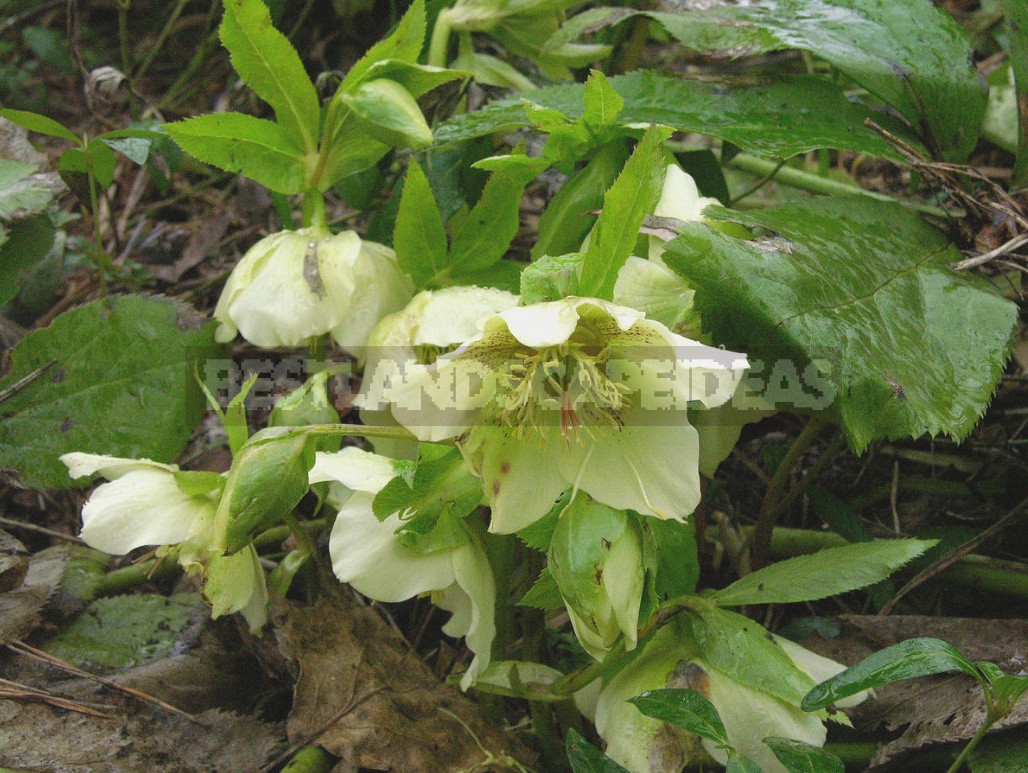
Gardeners include such hybrids in the group Oriental Hybrids, and botanists – in the combined species of garden origin-Helleborus x hybridus). Unlike Helleborus niger, it is also called a Lenten rose, since it blooms in Western Europe during Lent (February – the first decade of March).
It also includes hybrids of Helleborus orientalis (in the broad sense) with other stemless (i.e., without pronounced stems, but with a bundle of basal leaves) European species, each of which makes its own contribution to the common cause. In particular, Helleborus torquatus gives hybrids blackness and Terry, Helleborus purpurascens-gray and brownish shades, Helleborus odorus-yellowness. The red tones are provided by Helleborus croaticus and Helleborus atrorubens, and the leaf is refined by Helleborus ultifidus subsp. hercegovinus.
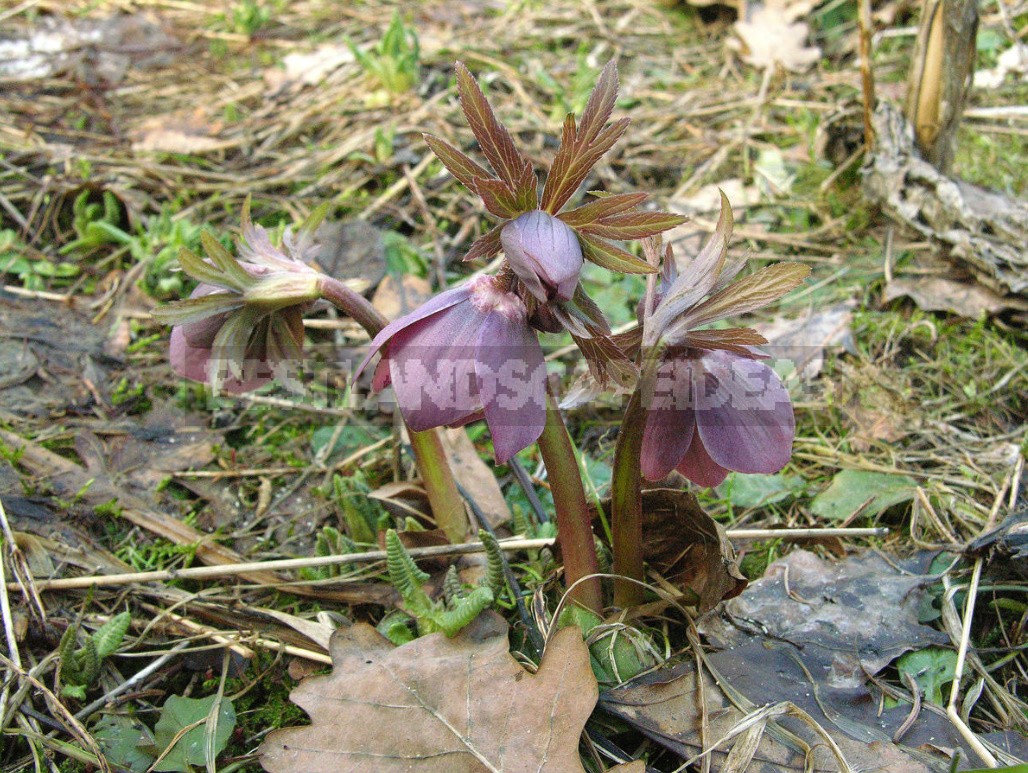
There are a lot of named varieties of Oriental Hybrids, although you can see at least a dozen in a wide sale, and they cost exorbitantly. Meanwhile, many of them are reproduced by seeds, but, as in the case of Helleborus niger, from some, so to speak, “varieties” you can expect anything. If ‘Mrs Betty Ranicar’ must be Terry and white with a slight green tinge, then ‘Ballard’s Group’ includes any plants originating from varieties and seedlings of Helen Ballard (1909-1995), whose main hobby was lean Helleborus. Starting with 4 pieces already in retirement, at the end of her life, she became the owner of the world’s largest collection, the exhibits of which were created by her. And just like the works of other famous breeders, her contemporaries-Eric Smith and Elizabeth Strangman-they spread around the world, becoming the basis of all solid collections.
In particular, the well-known series of multi-colored (‘White Lady Spotted’, ‘Pink Lady’,’ Yellow Lady’ and others), derived from the heiress of her collection Gisela Schmiemann from Germany. In addition to this series, perhaps the fate of ‘Mrs Betty Ranicar’ is much more interesting – it was found in an abandoned garden in Tasmania.
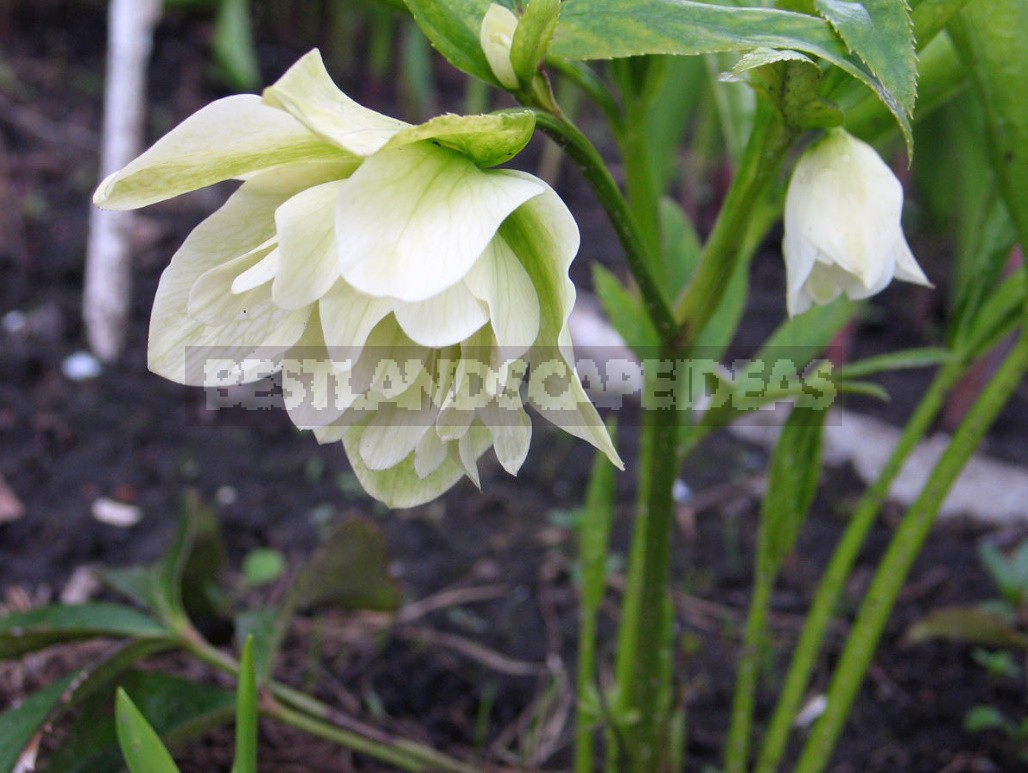
And what a great variety of Helleborus from the English nurseries Aschwood, Harvington, Fibrex! The famous Terry ‘Party Dress Doubles’ from Blackthorn and ‘Bradfield Hybrids’, which include the latest star shapes with narrow sepals! American ‘Heronswood Hybrids’ and stunning Terry and anemone from the sunshine nursery! All these black, yellow, fashionable apricot and pink with a narrow dark edge and veins..
Breeders constantly strive for ideals. Try to improve the red and yellow, which are not yet sufficiently pronounced, to fix in the offspring mottling with a uniform distribution of points, to get two-color Terry. There are no stable variegated forms that appear as random seedlings, advertised, and then silence… These are the ancient ‘Foliis Variegatis’, ‘Confetti’, Irish ‘Graigueconna’, ‘Pine Knot Variegated Strain’ from the same nursery.
Another goal is flowers sticking up so that they can be seen better. Plants, however, resist – in this position, important parts of the flower are flooded with rain, which prevents pollination.
Helleborus Breeding
It is easiest to grow Helleborus from fresh seeds sown after maturation – in the second half of June or, at least, in August. Then they will rise together in the spring, although there will be some that will rise in another year. During storage, the germination of seeds falls significantly.
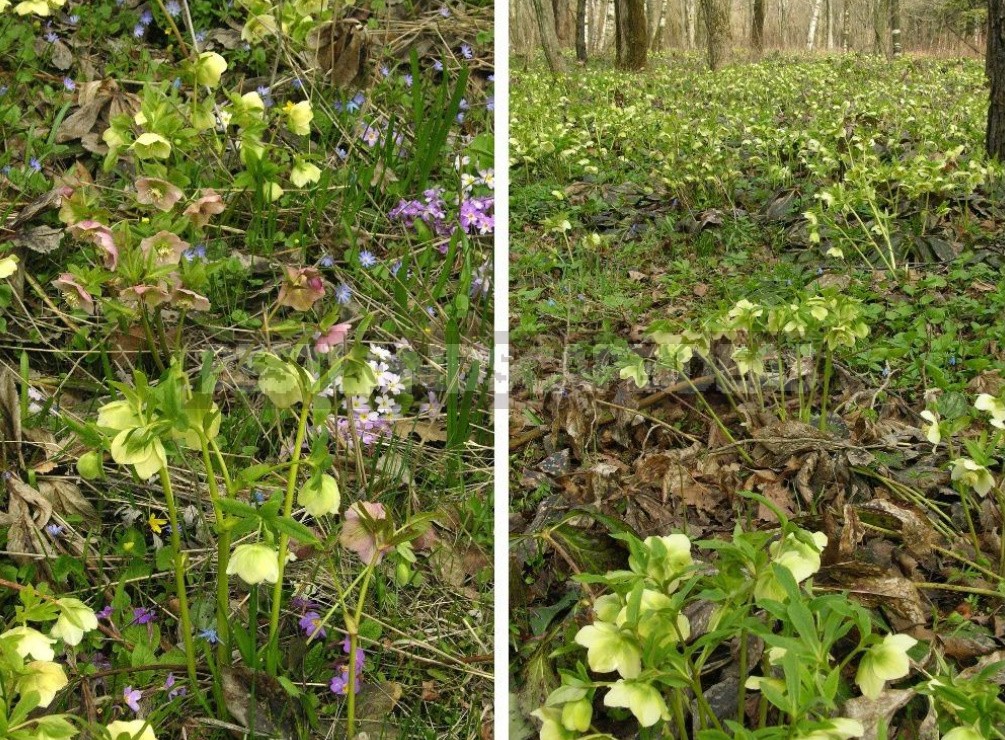
Early sowing is still necessary in order for the seeds to pass first a period of warm stratification, then cold – in winter. Such are their conditions for germination. Seeds obtained too late are sown in a pot and kept at room temperature for 1.5-2 months (about + 20°C), watered, then transferred to the refrigerator until germination begins. Seedlings in pots are put in a warm and bright place until spring. Instead of a refrigerator at the second stage, the crops can simply be put out on the street under the snow.
Plants bloom for 3-4 years, the first flowering may be atypical, then it will get better, so do not rush to be upset. Divide Helleborus in early spring and at the end of August, and the last term is preferable, especially for Oriental Hybrids. Helleborus foetidus and other short-lived stem species are practically not divided.
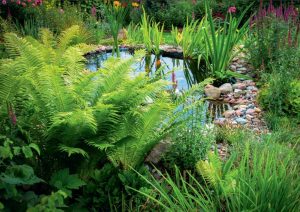
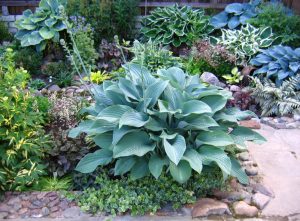
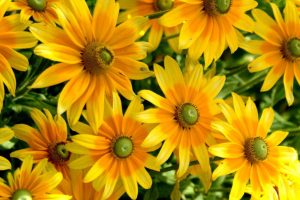
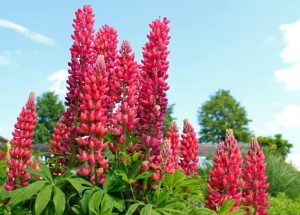
Leave a Reply